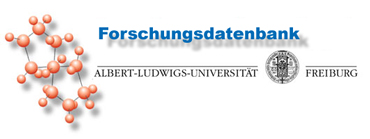| [Zurück zum Forschungsbericht] |
 |

Der protektive und regenerative Effekt von NAP und ADNF-9 auf retinale Ganglienzellen in vitro
Projektbeschreibung:Purpose: Recent studies demonstrated that short peptides derived from activity-dependent neurotrophic factor (ADNF) and activity-dependent neuroprotective protein (ADNP) are neuroprotective at femtomolar concentrations. We evaluated these findings in cultures of purified rat retinal ganglion cells (RGC) using two such peptides, ADNF-9 and NAP. In a second step, we investigated the influence of these peptides on neurite outgrowth and regeneration in retinal explants. Methods: Retinal ganglion cells (RGC) were purified from newborn (P0 - P2) rat retina by immunopanning with antibodies against Thy1.1 and cultured in serum-free N2 medium for 2 days. RGC were treated with ADNF-9 and NAP at concentrations ranging from 10-18 to 10-10 M. Survival was quantified by counting viable cells in phase-contrast microscopy. Retinal explants from postnatal (P9 - P11) rats were cultured in three-dimensional fibrin clots in serum-free medium for 3 days. Explants were treated with1 µM NAP or 1 µM ADNF-9. Neurite outgrowth was visualized by staining with sudan black and quantified by measuring axonal length. Results: Both peptides enhanced survival of RGCs in a dose-dependent manner. ADNF-9 showed a maximal effect at 10 pM with an increase of survival to 177% [95% confidence interval: 149, 204] of the control level. NAP showed a maximal effect at 5 pM with an increase of survival to 167% [146, 189]. In the explants, 1 µM ADNF-9 enhanced axonal outgrowth to 126% [118, 133] and 1 µM NAP to 117% [98, 137] compared to controls. Conclusions: Both peptides, ADNF-9 and NAP, do not only increase retinal ganglion cell survival in culture but also support regeneration and neurite outgrowth in retinal explants. These peptides deserve further attention as potential neuroprotective compounds in retinal and optic nerve diseases.Projektlaufzeit:
Ansprechpartner: Dr. W. Lagrèze
Tel: 270-4060
Email: mail@lagreze.de
Projektbeginn: 2001Projektleitung:
Projektende: 2004
Dr. W. LagrèzeKooperationspartner
Albert-Ludwigs-Universität Freiburg
Augenklinik
Abteilung Allgemeine Augenheilkunde mit Poliklinik
Killianstrasse 5
79106 Freiburg
Telefon: +49 (761) 270-40060
Fax: +49 (761) 270-40630
Email: augenklinik.direktion@uniklinik-freiburg.de
http://www.uniklinik-freiburg.de/augenklinik.html
I. Gozes, Dep. of Clinical Biochemistry, Sackler Faculty of Medicine, Tel Aviv University H. Hofmann, Institut I, Universität FreiburgAktueller Forschungsbericht